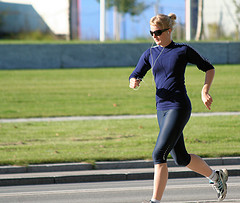Whatever was on your list yesterday of things you want to accomplish, experience, or enjoy, the foundation for all of it is a simple formula for taking care of yourself, body and soul. You may have heard me say this or read it in some of my work, but you can’t avoid if you want a charmed life: the acronym ME, Meditation and Exercise. We’ll discuss exercise tomorrow. For now: meditation.

When Doing Nothing Can Give You Everything
A while back, I took an inventory of my professional
life. On the left-hand side of the page I wrote every noteworthy success I’d
experienced up until then. On the right side I wrote what I’d done to bring
about each red-letter event. The right column was most illuminating: every
entry either said, “Nothing,” or “I showed up.”
It wasn’t that I’d been sitting around watching TV and
waiting for miracles. I did my daily tasks. When I wrote a book or article, or
when I gave a talk, I gave it everything I had, but every major “break” came
from out of the ever so accommodating blue. No manipulating, strategizing, or
finagling required. In fact, my best laid plans and manipulations have, for the
most part, fallen on their manipulative faces. I’ve pretty much given up on
them.
What this shows me is that we can’t force anything.
Instead, our job is to keep the path cleared for the good stuff to ride in on.
Like an isometric exercise, this may look like doing nothing. Nothing, however, involves holding the vision of what we
want, staying confident (even when that’s a stretch), doing what’s required in
the moment, and tuning into that barely perceptible inner voice and acting on
what it says. This last piece is doing nothing cum laude.
The crowing glory of productive inactivity, meditation
or contemplation, can dispatch inner emptiness more effectively than any other
single method. If you charge your cell phone, program your coffee-maker, and
gas up your tank, you already know that a full battery, Columbian dark-roast,
and unleaded regular are essential to the way you live. Concentrated
nothing-doing—sitting in a chair or on the floor in total silence appearing
to be, oh my God, wasting time—does
for you as a human entity what you do so automatically for the various machines
in your life: power them up.
So here’s what you do: nothing! Well, almost. You get
up in the morning, light a little candle on the table by your bed, and when you
come back from the bathroom, the candle is there as a reminder that you’re not
going to jump into your day without charging your soul. To do this, you sit: on
the bed leaning against the headboard, on the floor cross-legged with your back
against the bed or the wall, or in a chair with both feet on the floor and your
hands resting comfortably in your lap. Close your eyes and notice the
remarkable fact that you just keep breathing—which is evidence in itself that
you have a reason to be here; otherwise, why wouldn’t your breathing just stop?
Once you’ve tuned into the rhythm of your breathing,
match a silent affirmation to it. Inhale: “I am,” exhale: “enough.” Or inhale
“God,” exhale: “loves me.” Or (this is the one I use) inhale: “All is,” exhale:
“well.” You can use any short phrase you like as long as it’s positive and
something with which you sincerely wish to program your mind. Sit there and do
this for ten or fifteen or twenty minutes. Twenty is a little better than ten
and ten is enormously better than blowing this off.
You’ll have all sorts of extraneous thoughts (“Is the
sprinkler on?” “Do I have clean socks?” “This is dull—why am I doing it?”).
Don’t fight the thoughts, but don’t entertain them either. Just give each one a
nod and let it float by like a wispy white cloud in an otherwise clear sky.
Then come back to your phrase and your breath.
Do this every morning. If you miss one, don’t miss the
next one. For even more benefit, meditate again in the early evening—either
by staying late at work if there’s a private corner in your office, or doing
another ten, fifteen, or twenty minutes of meditation when you get home. This
can be a lovely way to punctuate the divide between your work day and your
private life. Bottom line: meditating twice a day is terrific, but meditating
once a day is indispensable.
Here’s what’s in it for you:
·
Fullness. After you’ve
done this for awhile and get the hang of it, you’ll feel less needy of whatever
you’ve been needing.
·
Calmness. Someone like
me (Aries and half Italian) is never going to be non-stop placid, but the
degree of calmness in anyone’s life will increase with regular meditation.
·
Insights. Since you’re
opening the channels to the best that’s inside you (you’ll sometimes see this
called your higher self), little
brilliances will just pop up in a way they didn’t before. They’ll come in the
form of solutions to problems and as creative ideas. Some of these will just
give you a better a day. One or two of them might give all of us a better
world.
Regular meditation is also purported to bring with it
a plethora of health benefits: lower blood pressure, reduced cholesterol, fewer
sick days, a slowing of the aging process. You only get the perks, of course,
if you do the practice. That takes commitment and discipline. If you’ve been
short on those, this is a nice, gentle place to learn them. Of course, if you’d
rather learn the hard way, that option is always available. I suggest that you
make it easy on yourself and begin the ageless art of focused non-doing this
afternoon or first thing tomorrow. Keep it up, and fat, broke and lonely won’t
have a chance.
- Take an action: Sit in silence for at least ten minutes within
the next 24 hours. Intend to repeat this practice daily until you’re older
than you ever thought you’d get. If at first you’re bored or this doesn’t
seem to be doing anything, fantastic. You’re doing it exactly right.

